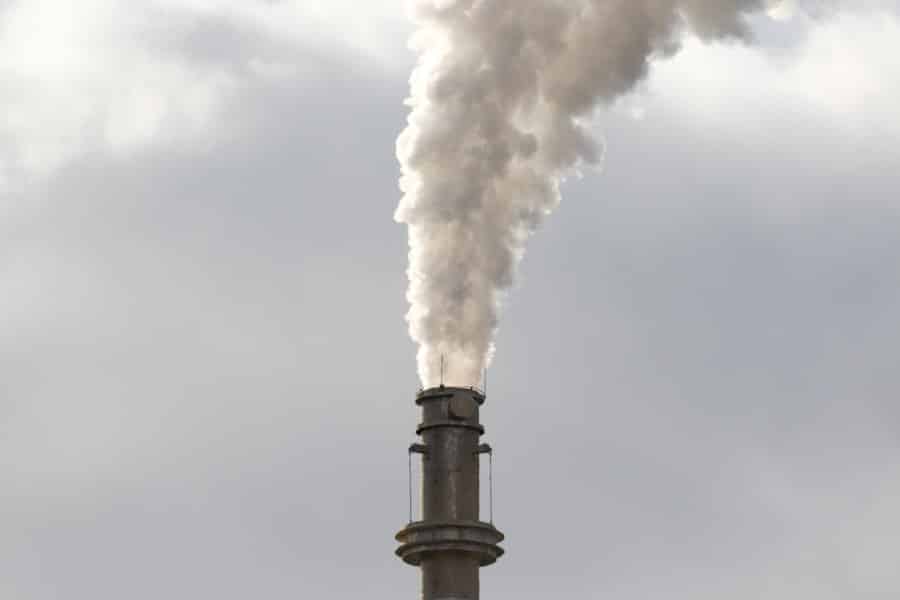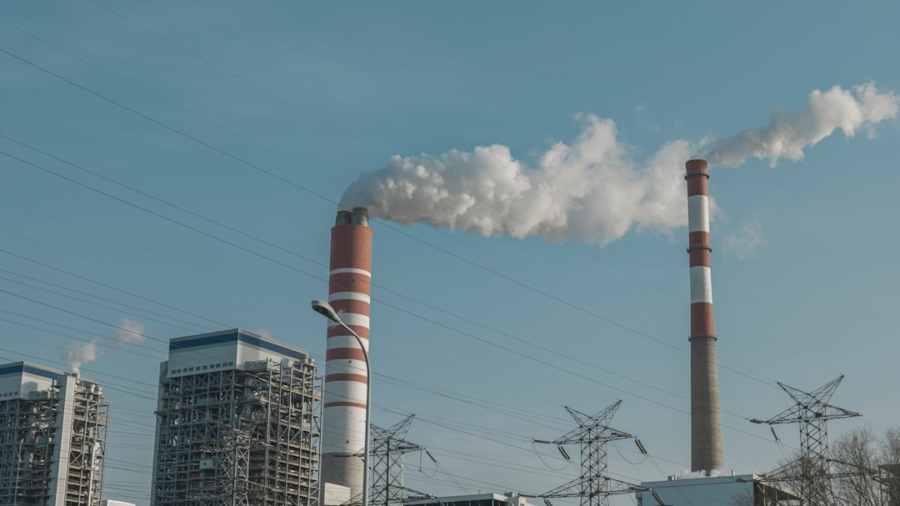Carbon capture technologies have emerged as a pivotal component in the global strategy to combat climate change. As the world grapples with the escalating impacts of greenhouse gas emissions, these technologies offer a tangible solution to mitigate the effects of carbon dioxide (CO2) released into the atmosphere. The urgency of addressing climate change has never been more pronounced, with rising global temperatures leading to extreme weather events, sea-level rise, and biodiversity loss.
Carbon capture and storage (CCS) technologies can play a crucial role in reducing the carbon footprint of various industries, particularly those that are hard to decarbonize, such as cement, steel, and chemical manufacturing. The significance of carbon capture extends beyond mere emission reduction; it also aligns with international climate agreements, such as the Paris Agreement, which aims to limit global warming to well below 2 degrees Celsius. By capturing CO2 emissions at their source and storing them safely underground or utilizing them in various applications, carbon capture technologies can help countries meet their climate targets while continuing to rely on fossil fuels during the transition to a more sustainable energy system.
This dual benefit of enabling continued industrial activity while reducing emissions positions carbon capture as a critical tool in the broader climate action toolkit.
Key Takeaways
- Carbon capture technologies play a crucial role in mitigating climate change by capturing and storing carbon dioxide emissions from industrial processes and power generation.
- Current challenges and limitations of carbon capture technologies include high costs, energy requirements, and the need for suitable storage sites for captured carbon dioxide.
- Innovations and advancements in carbon capture technologies, such as the development of more efficient and cost-effective capture materials and processes, are driving progress in the field.
- The potential impact of carbon capture technologies on reducing greenhouse gas emissions is significant, as it allows for the continued use of fossil fuels while reducing their environmental impact.
- Government policies and incentives are essential in promoting the adoption of carbon capture technologies, as they can provide financial support and create a favorable regulatory environment for investment and development.
- Integrating carbon capture technologies with renewable energy sources can further enhance their effectiveness in reducing emissions and creating a more sustainable energy system.
- Economic viability and investment opportunities in carbon capture technologies are growing as the technology matures and as more countries and industries commit to reducing their carbon footprint.
- The future outlook for carbon capture technologies is promising, with the potential for scaling up deployment to make a meaningful impact on global emissions reduction efforts.
Current Challenges and Limitations of Carbon Capture Technologies
Despite the promise of carbon capture technologies, several challenges and limitations hinder their widespread adoption. One of the primary obstacles is the high cost associated with capturing and storing CO2. The infrastructure required for effective carbon capture is often expensive to develop and maintain, which can deter investment from both private and public sectors.
For instance, the cost of capturing CO2 from power plants can range from $50 to $100 per ton, depending on the technology used and the specific conditions of the facility. This financial burden can make it difficult for companies to justify the investment, especially when cheaper alternatives exist. Moreover, there are technical challenges related to the efficiency and scalability of carbon capture technologies.
Many existing systems are designed for specific applications and may not be easily adaptable to different industrial processes. Additionally, the long-term storage of captured CO2 raises concerns about leakage and environmental safety. The geological formations used for storage must be carefully selected and monitored to ensure that they can securely contain CO2 over extended periods.
These challenges necessitate ongoing research and development to enhance the effectiveness and reliability of carbon capture technologies.
Innovations and Advancements in Carbon Capture Technologies

In recent years, significant innovations have emerged in the field of carbon capture technologies, driven by both academic research and private sector initiatives. One notable advancement is the development of direct air capture (DAC) systems, which extract CO2 directly from the atmosphere rather than from point sources like power plants. Companies such as Climeworks and Carbon Engineering are pioneering DAC technologies that utilize chemical processes to bind CO2 from ambient air, offering a potentially scalable solution for reducing atmospheric CO2 levels.
Another area of innovation lies in the use of novel materials for carbon capture. Researchers are exploring advanced sorbents and membranes that can enhance the efficiency of CO2 capture processes. For example, metal-organic frameworks (MOFs) have shown promise due to their high surface area and tunable properties, allowing for selective adsorption of CO2.
These materials could significantly lower the energy requirements for capturing CO2, making it more economically viable. Additionally, advancements in machine learning and artificial intelligence are being applied to optimize carbon capture processes, enabling real-time monitoring and adjustments that improve overall performance.
Potential Impact of Carbon Capture Technologies on Reducing Greenhouse Gas Emissions
The potential impact of carbon capture technologies on reducing greenhouse gas emissions is substantial. According to estimates from the International Energy Agency (IEA), CCS could contribute to nearly 15% of the cumulative emissions reductions needed by 2050 to limit global warming to 1.
By capturing billions of tons of CO2 annually from industrial sources and power generation, these technologies can significantly lower overall emissions while allowing for continued economic growth.
Furthermore, carbon capture technologies can facilitate negative emissions strategies, which are essential for achieving net-zero targets. By integrating CCS with bioenergy (BECCS), where biomass is used as a fuel source alongside carbon capture, it is possible to create a net-negative emissions scenario. This approach not only reduces atmospheric CO2 but also provides a sustainable energy source.
The combination of CCS with renewable energy sources can further enhance its effectiveness by providing a reliable means of managing emissions while transitioning to cleaner energy systems.
The Role of Government Policies and Incentives in Promoting Carbon Capture Technologies
Government policies and incentives play a crucial role in promoting the development and deployment of carbon capture technologies. Many countries have recognized the importance of CCS in their climate strategies and have implemented various measures to support its growth. For instance, tax credits such as the U.S.
45Q tax credit provide financial incentives for companies that invest in carbon capture projects, effectively lowering the cost barrier associated with these technologies. In addition to financial incentives, regulatory frameworks can also facilitate the adoption of carbon capture technologies. Governments can establish clear guidelines for CO2 storage and monitoring, ensuring that projects meet safety and environmental standards.
Furthermore, public funding for research and development can accelerate innovation in carbon capture technologies by supporting pilot projects and collaborations between academia and industry. By creating a conducive policy environment, governments can stimulate investment in CCS and drive its integration into broader climate action efforts.
Integration of Carbon Capture Technologies with Renewable Energy Sources

The integration of carbon capture technologies with renewable energy sources presents a promising pathway for achieving significant emissions reductions while transitioning to a sustainable energy future. As renewable energy generation continues to expand, particularly through wind and solar power, there is an opportunity to combine these clean energy sources with CCS to create hybrid systems that maximize efficiency. For example, renewable energy can be used to power carbon capture processes, reducing reliance on fossil fuels during operation.
This synergy not only enhances the sustainability of carbon capture but also allows for greater flexibility in energy production. Additionally, captured CO2 can be utilized in various applications, such as enhanced oil recovery (EOR) or converting it into valuable products like fuels or chemicals through processes like carbon utilization. This circular approach not only mitigates emissions but also creates economic opportunities by transforming waste into resources.
Economic Viability and Investment Opportunities in Carbon Capture Technologies
The economic viability of carbon capture technologies is a critical factor influencing their adoption across industries. While initial investments may be substantial, the long-term benefits can outweigh these costs when considering potential savings from avoided carbon taxes or regulatory penalties associated with emissions.
Investment opportunities in carbon capture technologies are expanding as more companies recognize the importance of sustainability in their operations. Venture capital firms are increasingly funding startups focused on innovative carbon capture solutions, while established corporations are investing in CCS projects as part of their corporate social responsibility initiatives. The growing demand for low-carbon products and services is driving interest in carbon capture as a means to enhance competitiveness in a rapidly evolving market landscape.
Future Outlook and Potential for Scaling Up Carbon Capture Technologies
Looking ahead, the future outlook for carbon capture technologies appears promising but requires concerted efforts from multiple stakeholders to realize their full potential. Scaling up these technologies will necessitate significant investments in infrastructure, research, and development to overcome existing challenges related to cost and efficiency. Collaborative efforts between governments, private sector entities, and research institutions will be essential in driving innovation and deployment at scale.
Moreover, public awareness and acceptance of carbon capture technologies will play a vital role in their future success. As communities become more informed about the benefits of CCS in addressing climate change, support for these initiatives is likely to grow. Education campaigns highlighting successful case studies and demonstrating the safety and efficacy of carbon capture can help build public trust.
In conclusion, while challenges remain in scaling up carbon capture technologies, their potential impact on reducing greenhouse gas emissions is significant. With continued innovation, supportive policies, and increased investment, carbon capture could become a cornerstone of global climate action efforts in the coming decades.
In the ongoing discourse about the future of carbon capture technologies in climate action, it’s essential to consider the role of innovative software solutions in enhancing these technologies. An interesting related article is Uncovering the Best Order Flow Trading Software: In-Depth Reviews and Analysis. While this article primarily focuses on trading software, the underlying theme of leveraging advanced software for complex data analysis and decision-making is highly relevant to the development and optimization of carbon capture technologies. By drawing parallels between these fields, we can explore how cutting-edge software can be adapted to improve the efficiency and effectiveness of carbon capture systems, ultimately contributing to more robust climate action strategies.
FAQs
What is carbon capture technology?
Carbon capture technology is a process that captures carbon dioxide (CO2) emissions from sources such as power plants and industrial facilities, preventing the CO2 from entering the atmosphere.
How does carbon capture technology work?
Carbon capture technology works by capturing CO2 emissions at their source, then transporting and storing the CO2 in underground geological formations or utilizing it for other industrial processes.
What are the benefits of carbon capture technology?
The benefits of carbon capture technology include reducing CO2 emissions, mitigating climate change, and enabling the continued use of fossil fuels while transitioning to renewable energy sources.
What are the challenges of carbon capture technology?
Challenges of carbon capture technology include high costs, energy requirements for the capture process, and the need for infrastructure to transport and store captured CO2.
What is the future of carbon capture technologies in climate action?
The future of carbon capture technologies in climate action is promising, with ongoing research and development focused on improving efficiency, reducing costs, and expanding the use of carbon capture technology across various industries.

